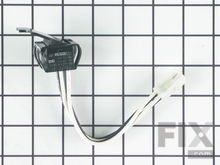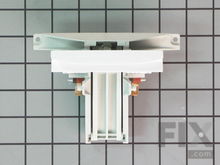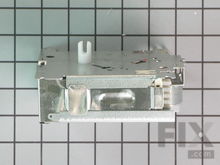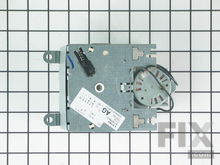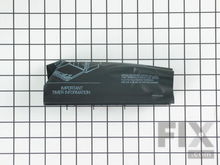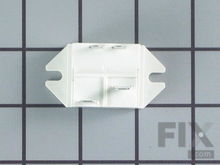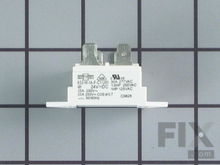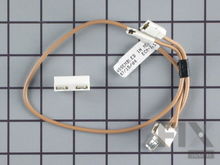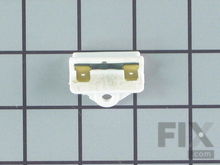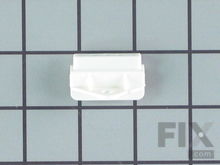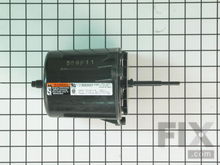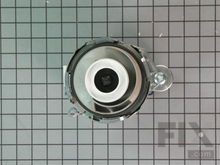How To Repair A Dishwasher That Won't Start
- Rated as EASY
- 1817 repair stories
- 6 step by step videos
Door Latch or Door Latch Switch
Although it may seem intimidating to repair a dishwasher on your own, it’s not as hard as you might think. It’s certainly not as expensive as calling in a service technician. Here is a guide to determining which part is causing the problem, so you can proceed with confidence in repairs. Once you read a bit about the mechanisms of a dishwasher, it will be clearer what needs to be done and the correct way to repair or replace the part that’s keeping your dishwasher from starting. We’ve also provided a search box in which you can enter the model number to get details on your particular dishwasher, plus information on parts and instructions and videos on installations and repairs
Timer or Electronic Control
Did you check the latches and find they are working fine, but that the dishwasher hasn’t started running again yet? Then a check of the electronic control or the timer is the next indicated move. If your dishwasher has a manual timer, you will hear a click as the timer supplies power to each of the parts of the cycle in sequence: first to the drain pump to remove standing water from the bottom of the tub, then to the water inlet valve, then the heater and finally the drain pump again. First, unplug the dishwasher and unscrew the inner door panel. The timer is to be found behind the control panel at the top front of the machine. In the timer housing is an array of contacts directed by a little motor. Find a diagram of your dishwasher model in your owner’s manual or on the manufacturer’s website. This should show the timer contacts for the circuits of the motor and the inlet valve. Use your multi-meter to check the timer contacts. If you have an electronic control panel, it will be the main circuit board that controls the circuits for the motor and the inlet valve, via a microprocessor and electrical relays. You may see a fault code when this panel goes out, and you can call a service technician to perform a live voltage check on the relay outputs. You can also check the section of this guide marked thermal fuse.
Selector Switch
On your control panel is the switch used to choose the type of cycle you want the dishwasher to do, such as “Quick Wash” or “Energy-Saver Dry.” On some models, if this switch is part of the fill circuit or the circuit for the motor, the machine will not start up if the buttons for a selection isn’t all the way down or if the switch isn’t connecting properly. So start your investigation by making sure the selector buttons go all the way down when you’ve pressed them. Next, unplug the dishwasher. Remove the panel on the inside of the door and find the selector switch on the control panel. Use your owner’s manual or the manufacturer’s website to find a diagram of the control circuits, then use your multi-meter to check these contacts for continuity.
Motor Start Relay
Depending on which model of dishwasher you own, you may have a main pump motor that is put into action via a start relay. This will send power to the motor start windings with a moving plunger that runs a set of contacts. If power is coming from the control circuit to the motor but the dishwasher is not running, perhaps the motor start relay needs changing. Begin by unplugging the dishwasher and locating the motor; the relay will be mounted next to it. Use the wiring diagram from the owner’s manual of manufacturer website. Check the coil section with a multi-meter to make sure it has continuity. Then turn the relay upside down. When the plunger drops, the switch contact should have continuity.
Thermal Fuse
If your electronic controlled dishwasher features a thermal fuse, the control board depends on that fuse to get power and the machine will not start if the fuse breaks. Unplug the dishwasher, unscrew the inner door panel, and locate the thermal fuse, with its two wires, on the top of the control panel. Remove those two wires and use a multi-meter to check for continuity.
Drive Motor
Water is moved around to clean the dishes inside your dishwasher by the drive motor. If you have checked the timer/electronic control and the start relay, the next component to inspect in the chain of action would be the drive motor. If the motor doesn’t rotate it could be because the windings are bad. A loud hum from the motor also indicates this component as the malfunction, since that hum could mean the motor’s seized and must be replaced. Unplug the dishwasher, remove the lower kick plate, and check the motor windings with your multi-meter to ensure they have continuity.
More Repair Parts
Still not sure which part is broken? We can offer you custom troubleshooting help if you search with your model number.





